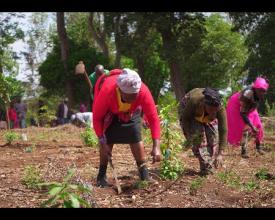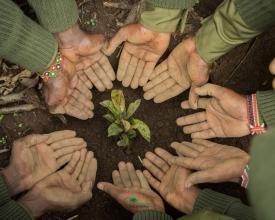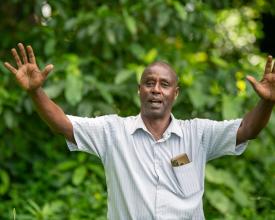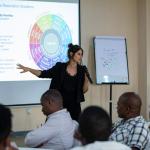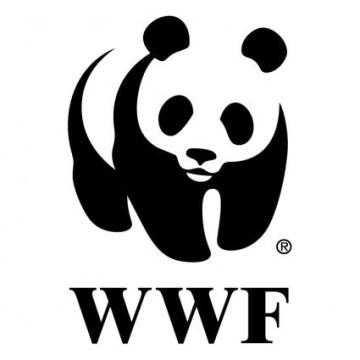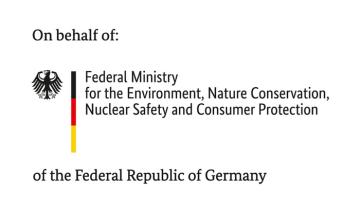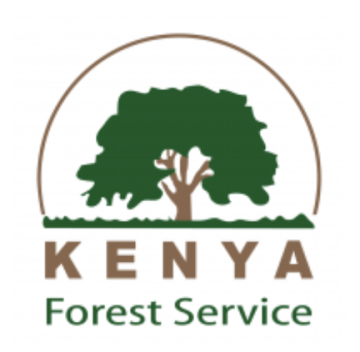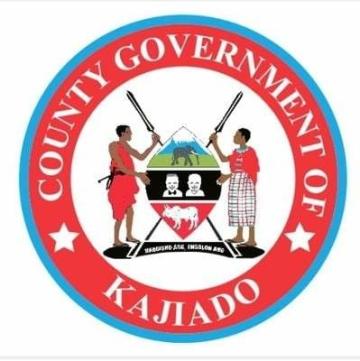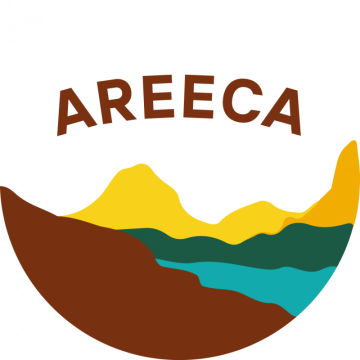
Entarara Forest: Establishment of community-managed natural forests
Entarara Forest, part of Kenya’s East Kilimanjaro landscape in Kajiado South, covers 23 acres and has been under threat from degradation and encroachment. The restoration project, led by WWF in partnership with local communities, Kajiado County, and the Kenya Forest Service, aims to rehabilitate and protect this small forest through the establishment of a Community Forest Association (CFA) and a participatory forest management plan (PFMP). The project’s goal is to restore forest cover, promote sustainable land use, and create livelihood opportunities. Community forest user groups were formed, including a beekeeping group, a tree nursery group, and an ecotourism group, with plans to enhance conservation efforts, fundraise, and develop eco-friendly infrastructure. This presents a model in Forest Landscape Restoration on how communities can be assisted take lead in embracing sustainable forest management.This solution was implemented by WWF under the AREECA project, a Consortium financed by BMUV through the IKI-fund.
Context
Challenges addressed
Entarara Forest faced significant degradation and encroachment due to unsustainable land use practices by neighboring communities. Prior to the project, the forest lacked clear boundaries and was treated as an open-access resource, leading to overuse and the spread of invasive species like Lantana camara (Lantana). The absence of a structured community management approach contributed to the forest encroatchment and degradation, threatening the forest biodiversity, water sources , and overall potential of the forest to serve the forest adjacent communities. These environmental pressures, compounded by the lack of local forest ownership and management, highlighted an urgent need for a formalized restoration and conservation initiative to protect the forest’s resources and engage the community in sustainable practices. The lack of guidelines for the forest management and ownership have been addressed through formulation of the management plan and signing of a forest management agreement.
Location
Process
Summary of the process
The building blocks were implemented in a sequence that gradually built a foundation for sustainable forest restoration. First, the Area Survey and Boundary definition in 2022 created clear intention for securing the area for conservation efforts. Following this, Removal of Invasive Species began, targeting Lantana camara to improve conditions for native plant regrowth. Starting from mid 2022, WWF’s engagement with the community led to the Establishment of the Entarara Community Forest Association (CFA), formalizing community involvement and creating a governance structure to manage restoration activities. Finally, Development of User Groups for Livelihood Support engaged community members in beekeeping, tree nurseries, and ecotourism, providing sustainable income sources tied to conservation. This timeline allowed each step to build on the last, moving from securing the forest and improving its ecological health to fostering local ownership and sustainable economic benefits, ensuring lasting restoration success.
Building Blocks
Area survey and boundary marking
To address the degradation and encroachment of Entarara Forest, the Kajiado County government initiated an area survey and boundary marking in 2018. The entire 23-acre forest was officially surveyed, and processing of beaconing is underway to underway to determine the official boundaries. This process is crucial in halting unauthorized expansion by neighboring farmers and reclaiming encroached areas. The survey provides legal recognition and clarity over the forest's extent, enabling authorities to enforce protection measures effectively. Boundary marking also facilitates subsequent restoration activities, such as tree planting in previously encroached zones and removing invasive species. This building block established the foundational framework for community engagement, leading to the formation of the Community Forest Association (CFA) and the development of a participatory forest management plan (PFMP).
Enabling factors
- Local Government Support: The decisive action by the Kajiado County government and support from the local Member of County Assembly (MCA) were pivotal as it provided legal backing and legitimacy.
- Community Engagement: Local leaders and community members participated in the marking, reinforcing respect for the boundaries.
- Clear Physical Markers: Beacons will serve as a visible reminder of the forest’s protected status, preventing unauthorized access.
Lesson learned
Establishment of clear, legally recognized boundaries is crucial in preventing encroachment and managing community expectations. Engaging the local community in the survey and marking process increases awareness and ownership, ensuring the boundaries are respected. Legal validation of the boundaries by the county government will help prevent disputes and provided a foundation for structured management. Additionally, the boundary marking set a clear zone for targeted restoration activities and conservation efforts, creating a protected environment for biodiversity recovery. This process highlights the importance of combining technical support (survey and marking) with community buy-in for long-term conservation success.
Removal of Invasive Species in Entarara Forest
In 2020, efforts to restore Entarara Forest included a focus on removing invasive plant species, specifically lantana camara, which had spread throughout the area. The County government and CFA, with support from the WWF initiated invasive plant removal as part of its commitment to rehabilitate the degraded areas in the forest. The invasive species removal aimed to improve the ecological health of the forest by allowing native species to re-establish and enhancing habitat quality that better supports ecosystem services. To support this, the County government supports local residents to patrol and secure the forest, preventing re-encroachment. This early restoration activity coupled with re-afforestation was essential for creating the right conditions for forest regeneration and impetus for future reforestation efforts.
Enabling factors
- Local Government Initiative: The County government recognized the need for immediate action to remove invasive species as part of its forest management responsibilities
- Local community participation: This is key as the activity was undertaken through local community participation and buy-in.
Lesson learned
Effective removal of invasive species like Lantana camara is critical for restoring forest health and enabling native plant growth. Engaging residents in the process also helped reinforce community responsibility toward the forest’s health. The experience highlighted the importance of controlling access to the forest and maintaining a structured approach to invasive species management as part of long-term forest restoration. Community involvement formed a base for future community engagement in overall forest restoration.
Establishment of Entarara Community Forest Association (CFA)
The formation of the Entarara Community Forest Association (CFA) marked a critical step in managing and conserving the forest through community engagement. WWF facilitated discussions with the seven nearby villages on the benefits of creating a CFA to allow legal and organized community involvement in forest management. By 2023, the CFA was officially formed, with a governance structure and a participatory forest management plan (PFMP) developed in collaboration with the Kenya Forest Service and Kajiado County. The CFA serves as the primary organization responsible for implementing restoration, protection, and community-led activities in the forest. It plays an essential role in mobilizing community members, organizing user groups, and ensuring that forest resources are managed sustainably, offering an inclusive platform for local voices and promoting ownership.
Enabling factors
- Legal Framework: Kenya’s forestry laws support the establishment of CFAs and participatory forest management.
- Community Buy-in: Engagement through village meetings built local trust and commitment.
- Capacity Building: WWF provided training on governance, financial management, and planning to empower the CFA
Lesson learned
Forming a CFA requires time and structured engagement to ensure community trust and organizational effectiveness. Clear governance structures, with roles and responsibilities well-defined, facilitate efficient management. Empowering community members with leadership and management skills is crucial for the CFA’s sustainability. The project found that regular consultations and clear legal guidelines for community associations are essential to secure buy-in and align with national forestry policies.
Development of User Groups for Livelihood Support
The Entarara CFA established three user groups—beekeeping, nursery planting, and ecotourism—to support alternative livelihoods and reduce pressure on forest resources. The beekeeping group aims to produce honey, providing both income and pollination services within the forest. The nursery group focuses on growing indigenous and fruit trees for sale, with a target of 100,000 seedlings annually, supporting reforestation and providing income. The ecotourism group plans to fundraise for forest fencing, promote awareness, and develop tourism-friendly amenities like picnic sites and campsites. These groups offer diverse livelihood options that are ecologically sustainable and economically beneficial, fostering community commitment to forest conservation.
Enabling factors
- Access to Resources: Community members utilize local resources for beekeeping and tree planting.
- Supportive Infrastructure: The forest’s proximity to a water source aids nursery development.
- Economic Motivation: Income-generating activities incentivize community participation in conservation.
Lesson learned
Organizing communities into user groups aligned with their interests strengthens commitment to conservation. Diverse livelihood opportunities help reduce reliance on forest resources, ensuring sustainable use. Ensuring access to training, resources, and market linkages for these groups is essential for long-term success. Transparent management of group funds and activities is key to building trust among members and maintaining focus on conservation goals.
Impacts
Entarara Forest health has improved exemplified by improved tree cover and return of previously displaced bird and mammal species. The forest now has a governance structure through the CFA and the forest management plan, those are critical for sustainable management of the forest. Community participation in the forest conservation has been fostered through formation of forest user groups and a forest management system under the CFA. The livelihood based user groups beekeeping, nursery planting, and ecotourism provide hopes for improved income among the CFA members. Income-generating activities like honey production, seedling sales, and tourism development have been identified, offering sustainable alternatives for local residents. The over 190 community members from villages adjacent the forest are now actively in the conservation of the forest through tree planting and forest protection. The community’s perspective on the forest has shifted from viewing it as an open resource to a valued asset, where they are the forest custodians. The regular involvement in forest management has further strengthened community ownership and responsibility toward conservation efforts.
Beneficiaries
The beneficiaries include over 190 community members from diverse households representing over 1000 individuals directly relying on the forest ecosystem services. The other beneficiaries are local institutions (4 schools and 3 churches) and 3 women groups.
Sustainable Development Goals
Story
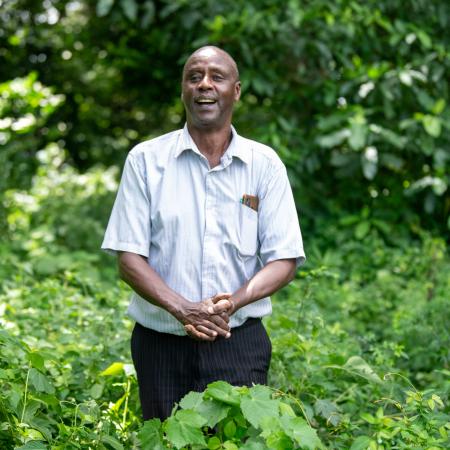
Reviving Entarara :A story From Raphael Leneo -Chairperson of the Entarara Community Forest Association
My name is Raphael Leneo, and I am the Chairperson of the Entarara Community Forest Association. When I was younger, the Entarara Forest in Kajiado County was a place of incredible beauty. It was dense with lush undergrowth, and the towering trees seemed to stretch endlessly into the sky. I remember how we used to pray under a particular tree called ‘Oretiti,’ a sacred spot for the Maa community. Occasionally, the community would give offerings there, honoring the forest for all it provided. It was not just a place of spiritual significance—it was also a source of traditional medicines that cured various ailments. The forest was, in every sense, an important part of our lives.
But that was then. Today, the 23-acre forest, which is now under the management of the county government in collaboration with the Entarara Forest Community, is under threat .In the recent past, the majority of the trees in the forest were over 100 years old, but today, only a handful remain. It’s heartbreaking to witness. The forest once supported a diverse species of flora and fauna, and its thick canopy created a cool, soothing microclimate in an otherwise hot and arid area. We had everything—water for domestic use, water for livestock, and a place for wildlife to thrive.
But then came the challenges. The problems began in the years between 1965 and 1969 when the land around the forest was subdivided for individual farm holding , and everyone received their share. As people settled, the forest began to suffer. “We used to have several wildlife species that have since moved due to the destruction,” I often hear elders say. Species like the black-and-white Colobus monkey and porcupines, once common in the forest, have now disappeared. They moved to the Loitokitok Forest and even to Mount Kilimanjaro. In fact, the forest used to be known as ‘Ilkeek Lorkoroin,’ named after the Colobus monkeys that inhabited it.
As more people settled, the forest faced human encroachment, and slowly, it started to lose its grandeur. The once abundant water from the forest’s nearby catchments began to dwindle. What was once a thriving, self-sustaining ecosystem became a place where human activity took precedence, and nature paid the price.
Every time I listen to the birds chirping in the forest now, I am filled with hope. There is something magical about the sounds of nature returning. It is a reminder of how far we have come..

